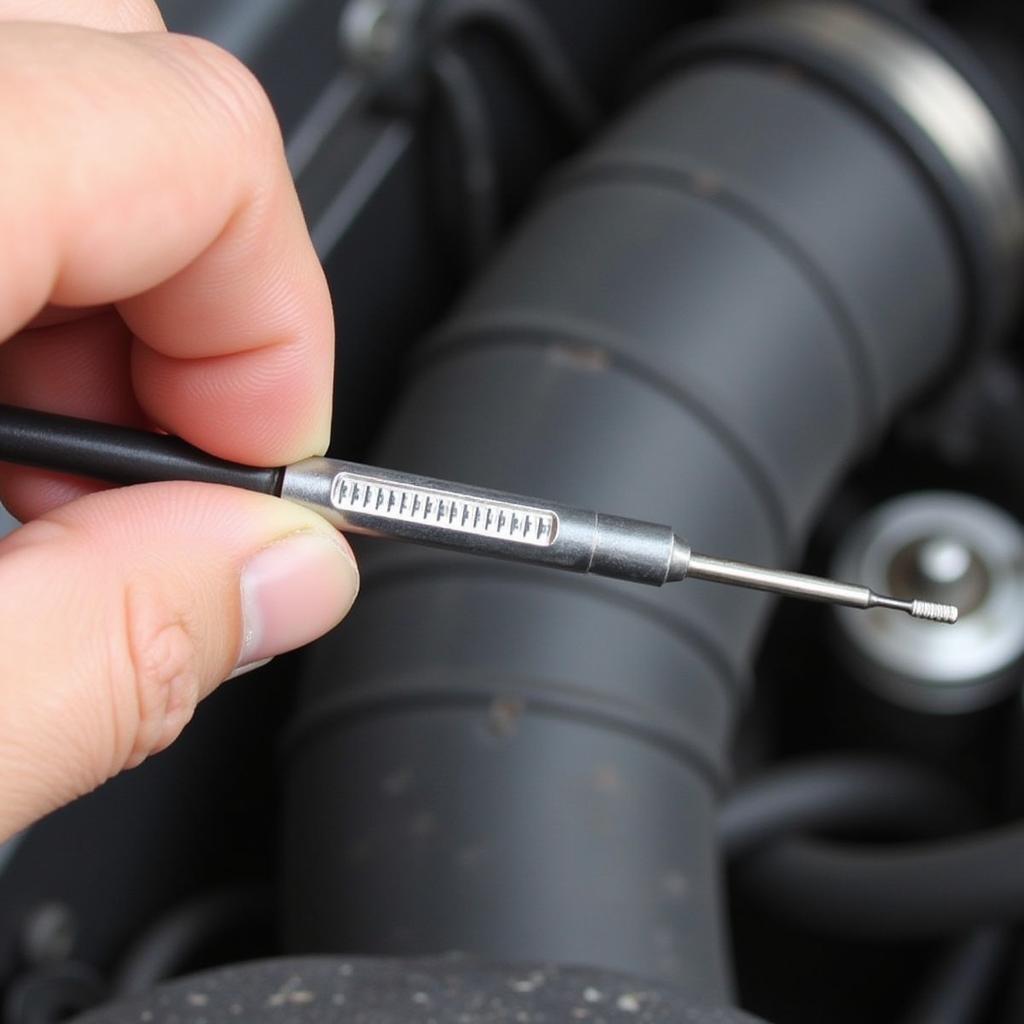Understanding your car’s transmission fluid temperature is crucial for maintaining its health and longevity. A Foxwell scanner can be an invaluable tool in monitoring this vital parameter, helping you prevent costly repairs and ensuring optimal performance. This guide explores the importance of transmission fluid temperature, how a Foxwell scanner helps you track it, and what to do if you encounter issues.
Similar to the foxwell nt301 obd2 code scanner manual, this guide will provide valuable information for car owners and technicians.
Why is Transmission Fluid Temperature Important?
Transmission fluid, much like engine oil, plays a critical role in lubricating moving parts, reducing friction, and preventing wear and tear within the transmission. However, unlike engine oil, transmission fluid also acts as a hydraulic fluid, powering the various components that shift gears. Maintaining the correct transmission fluid temperature is essential for optimal performance and longevity. Excessively high temperatures can cause the fluid to break down, losing its lubricating properties and potentially leading to transmission damage. Too low a temperature can hinder smooth shifting and reduce fuel efficiency.
How Does a Foxwell Scanner Help?
Foxwell scanners, depending on the model and the vehicle’s compatibility, can access the transmission control module (TCM) and retrieve various data points, including the transmission fluid temperature. This real-time information allows you to monitor the fluid temperature under different driving conditions, identify potential issues early on, and take preventative measures. This data is particularly useful when towing, driving in extreme temperatures, or experiencing unusual shifting behavior. Knowing the temperature can help pinpoint problems before they escalate into major repairs.
Troubleshooting High Transmission Fluid Temperature with a Foxwell Scanner
If your Foxwell scanner indicates a high transmission fluid temperature, it’s essential to address the issue promptly. Some common causes and troubleshooting steps include:
- Low Fluid Level: Check the transmission fluid level using the dipstick. Low fluid levels can lead to overheating. Top off the fluid if necessary, ensuring you use the correct type specified by your vehicle manufacturer.
- Clogged Transmission Filter: A clogged filter restricts fluid flow, leading to increased temperatures. Replace the transmission filter according to your vehicle’s maintenance schedule.
- Faulty Transmission Cooler: The transmission cooler helps regulate the fluid temperature. A malfunctioning cooler can cause overheating. Inspect the cooler lines for leaks or damage and replace if needed.
- Towing Heavy Loads: Towing puts extra stress on the transmission, generating more heat. Ensure your vehicle is rated for the load you’re towing and consider installing an auxiliary transmission cooler.
- Severe Driving Conditions: Driving in extreme heat or stop-and-go traffic can also elevate transmission fluid temperatures. Adjust your driving habits accordingly, taking breaks when necessary to allow the transmission to cool down.
 Checking Transmission Fluid Level with Dipstick
Checking Transmission Fluid Level with Dipstick
Is the Foxwell NT301 capable of measuring transmission fluid temperature? You can find the answer here: does the foxwell nt301 measure transmission fluid.
Interpreting Foxwell Scanner Transmission Fluid Temp Readings
Understanding the normal operating temperature range for your specific vehicle is crucial. Consult your owner’s manual for this information. Generally, transmission fluid temperatures should stay below 240°F (115°C). Consistent readings above this threshold warrant further investigation. A Foxwell scanner can also help identify intermittent temperature spikes, which may point to a developing problem.
Foxwell Scanners and Professional Diagnostics
The information provided by a Foxwell scanner is invaluable for both DIY enthusiasts and professional mechanics. While a scanner can help you diagnose potential issues, it’s essential to remember that it’s just one tool in the diagnostic process. For complex problems, consulting a qualified mechanic is recommended. They can utilize the data from your Foxwell scanner along with their expertise to provide a comprehensive diagnosis and repair plan.
Using Foxwell Scanners for Preventative Maintenance
Regularly monitoring your transmission fluid temperature with a Foxwell scanner can help you prevent costly transmission repairs. By catching potential problems early on, you can address them before they cause significant damage. This proactive approach can save you money in the long run and ensure the longevity of your transmission. For those interested in more advanced diagnostic tools, consider exploring the automaster pro foxwell.
What if there’s a flooding issue near your location and it affects your vehicle? You might want to know about foxwell road coomera flooding.
Conclusion
Monitoring your Foxwell Scanner Transmission Fluid Temp is essential for maintaining the health and performance of your vehicle’s transmission. A Foxwell scanner empowers you with the knowledge to identify and address potential problems early on, saving you money and extending the life of your transmission. Contact ScanToolUS at +1 (641) 206-8880 or visit our office at 1615 S Laramie Ave, Cicero, IL 60804, USA for any assistance or questions. We’re here to help you keep your car running smoothly.
Does the Foxwell NT301 work with older vehicles, such as a 2004 Nissan Maxima? Check out foxwell nt301 nissan maxima 2004.

